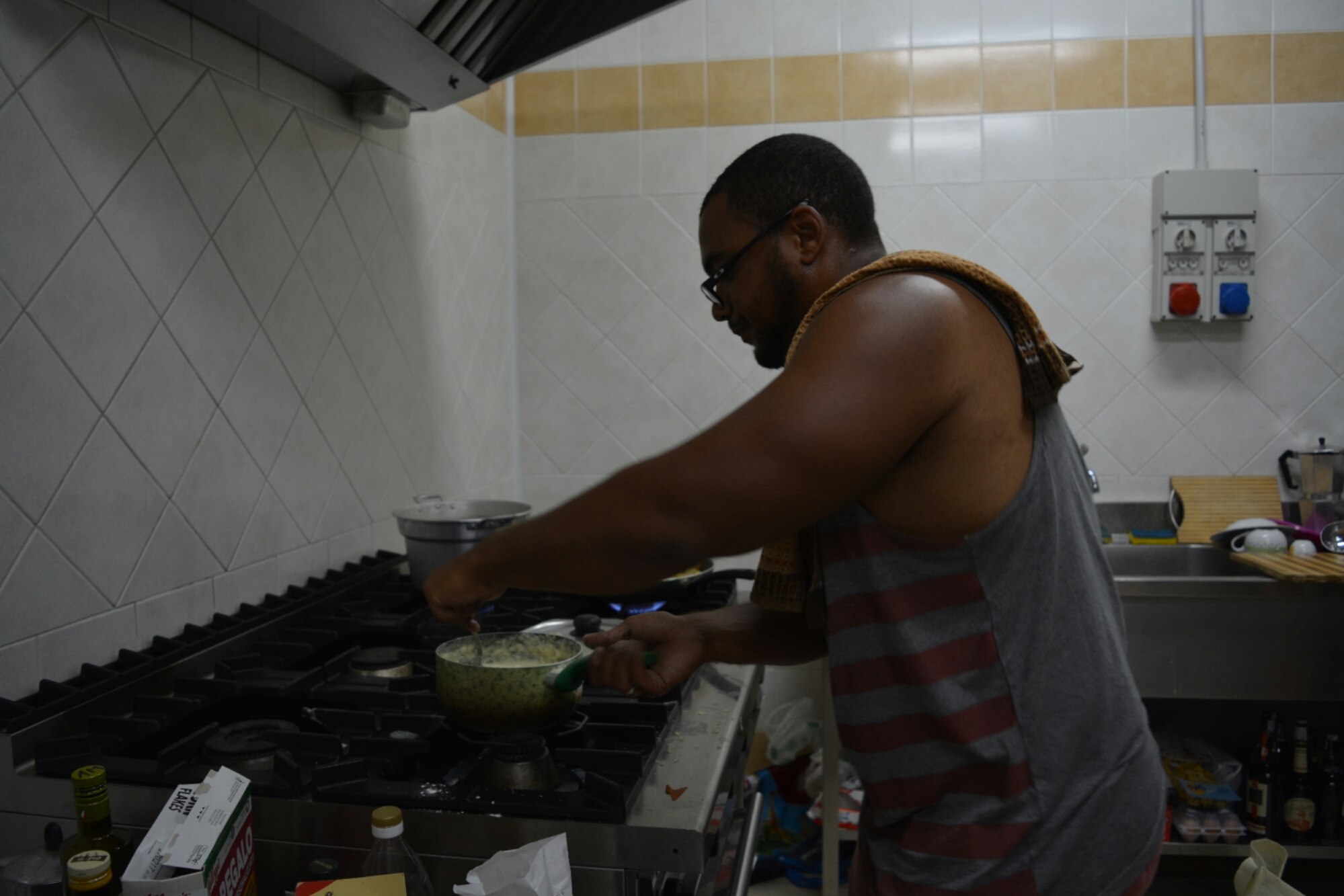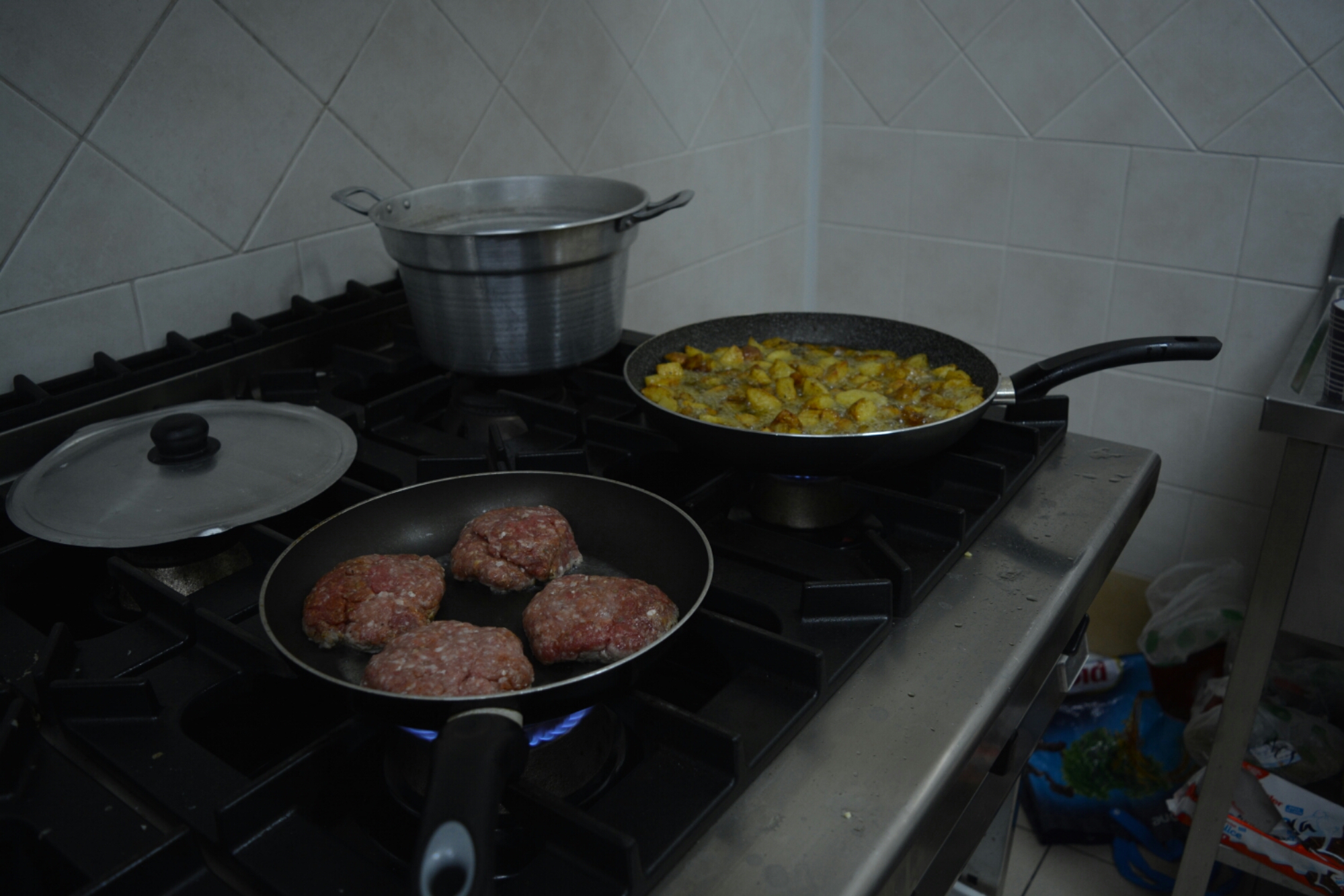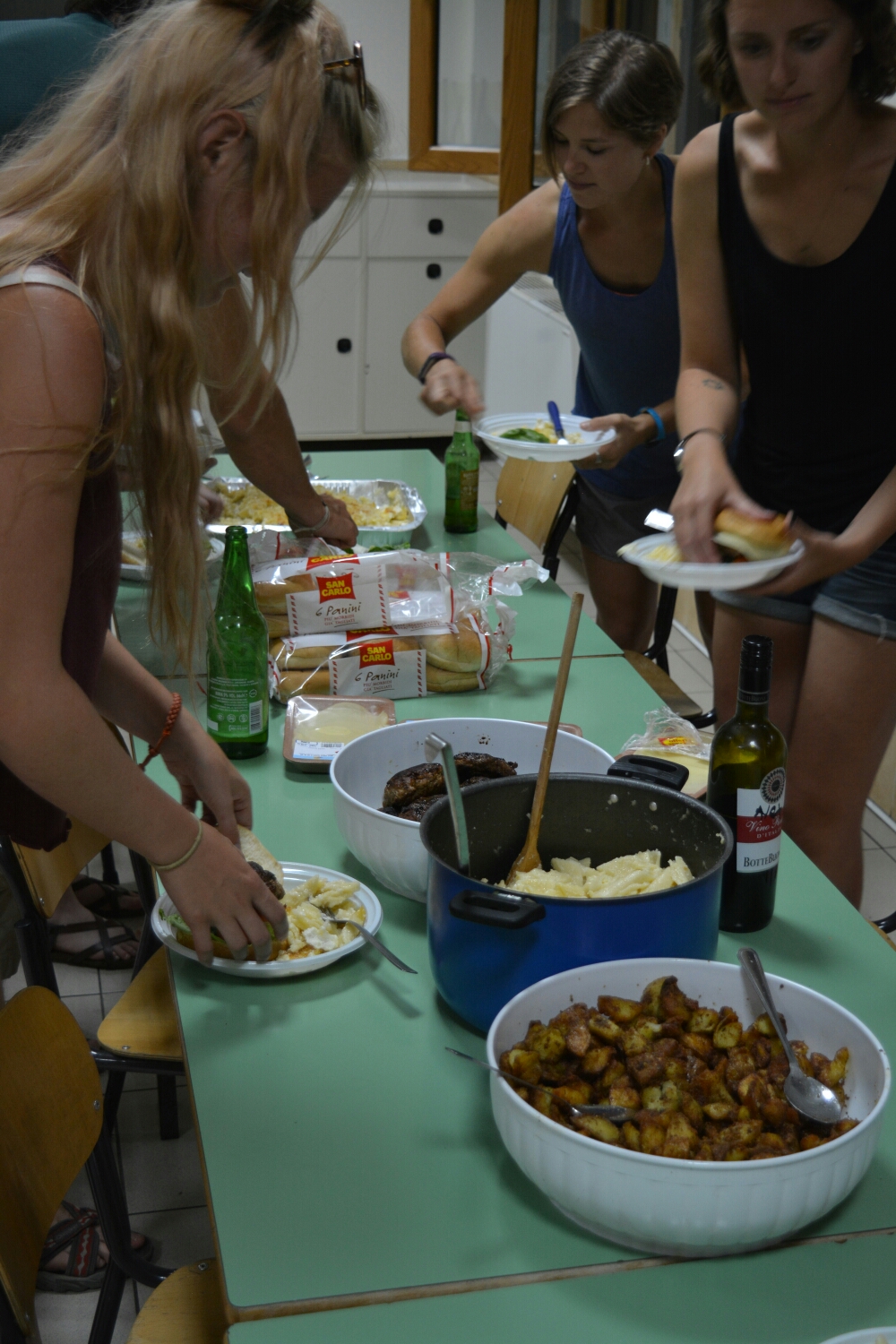Hi everyone! Sorry for the delay in posting. I’ve been a little ill, but I’m feeling better after a week of cold and allergy medicine.
Also, I want to give a shoutout to my Fraternity brothers gathering in NYC for the national bi-annual governance conference called the Grand Arch Council. I wish I could be there with you all, but alas, I’m spending my summer here in Italy doing Archaeology. Maybe next time!
We also took the time to celebrate July 4th here in Mirabella Eclano, bringing a little Red, White, and Blue to southern Italy. For those curious how we celebrated at the Apolline Project, yours truly made a feast with some American style favorites: burgers, potato wedges, and mac & cheese for 13 people.
I wore an American flag tank top and sweated it out in our kitchen for roughly 3 hours, but the flavors and smiles on everyone’s faces were worth it!
Before the festivities, however, we did have a great week excavating. On Monday and Tuesday, a backhoe and a smaller excavator came and dramatically changed the look of our trench, opening huge areas that were once covered in backfill for future excavation.

Later in the week, Justin and I continued in our respective areas in the trench. Justin’s team re-excavated the area around that bit of wall that we uncovered within the huge heap of backfill (when the machine came, it flattened and reburied that area). By re-excavating that area, we discovered what we found earlier was in fact part of the base of a brick and stone column matching three others in the trench. Together, these likely formed a portico or covered patio supported by columns or pillars marking the entrance to a larger structure. We won’t know how these columns corresponded with the rest of the site until we excavate more of our trench.

Beyond this, we found a couple really cool artifacts in the soil around the column base: a lead projectile for a sling; and a pair of fragments to uguentaria or small ceramic vessels used for containing oiles or perfumes (like part of an ancient toiletry kit). The soil they were found in is backfill, so they likely came from somewhere else that was previously excavated on site, but they still tell us about the kinds of activities and artifacts found in the greater settlement.


Unfortunately, my context seems to be never-ending. The fill beside the compacted Medieval surface keeps going in the same fashion it has since last week: dark brown humified silt with a significant presence of rocks, fragmented building materials, and the usual scatter of artifacts like animal bones, pottery, and chunks of marble decoration. Same ol’ same ol’ stuff that’s being found pretty much everywhere. Not to despair, however! By removing this soil and context, we’re moving closer to understanding more about when and why the adjoining medieval surface was made and why it is located where it is.

We also said goodbye to many of our participants who’ve been with us since the beginning of our work at Aeclanum. We had a great time working with them all, and we look forward to hosting several new people in the coming sessions. With the lessons taught over the last block, I thought it might be prudent to jot down some thoughts about one of the most frequently asked questions by participants: “Is this a rock?”. Hopefully the newbies read this, because I’m writing for them.
First of all, it’s very likely what you’re holding in your hand as you sieve through the soil is a rock. Think about it. Rock takes thousands – no millions of years to form through a process utilizing nature’s most powerful forces. The result is a hardened, crystalline chunk of elements typically more durable than most anything else humans have ever made (unless it was out of rock).
That all being said, let’s determine whether what you’re holding is man made. Consider the object’s most intrinsic properties. What is its shape, its color, its weight and density, its texture? The most common artifacts you’ll find in an archaeological excavation will be ceramic pottery and building materials like brick. Here in Italy, if not the entire Mediterranean, the vast majority of the clay used to make ceramic vessels appears anywhere from yellow to bright orange. Reds and greys sometimes appear, but they often accompany one of those other colors. Ceramics in the ancient world were made by spinning a wad of clay on a wheel, and forming a shape with the potter’s hands. Some of the fancier stuff might’ve been poured in a mould and given a glaze or painted, but one factor remains consistent: ceramic vessels will have what is called a fabric, or a mineral composition that is visible in the middle when broken (and believe me, most vessels you’ll find are broken to the tiniest of bits called sherds). That fabric will show you what the clay is made of, whether the visible surfaces were given a colored finish called a slip, and how coarse or fine the clay is. Further, ceramic vessels are curved and rounded. A fragment will preserve some of the circumference of the whole vessel. Also, that shape, along with the thickness of the vessel, affects how it breaks. Typically it will shatter or break cleanly, but if you look at a broken piece of rock or mineral, it won’t cleave in the same way. Lastly, a piece of ceramic clinks a little differently from your average rock. Listen to how it shakes around in your sieve. It bounces around at a higher pitch than most of the rocks you’ll have.
All of that being said, we need to have to have a talk about ceramic’s less sexy cousin, brick (and roofing and flooring tiles). Bricks are made very similarly to ceramics. They use a mixture of minerals, water, and a variety of added components to yield a desired effect on its moldability and durability. Bricks, however, aren’t typically made to awe your dinner guests. They are functional and structural. They usually won’t be made with a glaze or slip to yield an aesthetic look. The end result is a very coarse, porous, thick, and unshapely object. When found, brick fragments will be larger, less shapely, heavier yet less dense, chunks. Each project varies in their approach to keeping bricks, but our current policy is to take note of how complete it is, how often you’re finding bricks, and keep it if there is a manufacturer’s stamp on it (ancient Roman brick makers stamped some of their bricks to indicate they made them).
So what else could this object be, if it’s not a rock, not ceramic, and not a brick? We’ve been finding some marble. How do you know if it’s marble? Well, marble is cold to the touch, will typically have flat planes of both cleavage as well as surfaces prepared by the decorators and builders using it, and will have a slightly transparent lustre. It’s also super dense, and for the space it occupies, will feel very heavy in your hand.
Ok, so it’s none of the characteristics I’ve described. What are you left with? Bone! Bone is light and not super dense, will be shaped like a body part, and on the edges where it is broken you will typically see a porous matrix where blood vessels pass and bone grows (I.e. the marrow).
The last kinds of things you’ll find are metal and shell. Shell is obvious. It’s thin and shaped like a snail or something living at the beach. Metal is a little bit more incognito. You need to know the kinds of objects made of metal that you might find on your site. For instance, you could find nails and coins. Nails will be longer, cylindrical, and might have a head. Coins will be small and round. Depending on the kind of metal, they’ll corrode in the soil and take on a separate color. Lead typically turns white (you’ll know when you find lead because it’s super dense and hard). Bronze turns a bright green and iron turns a orange and purple (because it rusts, duh).
A lot of supervisor’s might tell you to lick objects, and depending on how they stick to your tongue or how they taste, they’ll indicate what kind of material you’re handling. Don’t do this. Your spit ruins some of the increasingly important scientific data that we can gather from the materials you recover. Instead, just ask! I’ve handled a lot of all the objects you will encounter when you dig and I’ve read about or seen in museums even more. Have no fear, you’ll be asking a lot on your first few days “Is this just a rock or…?”. It’s my job to stop, take a look and help you figure it out!






Leave a comment